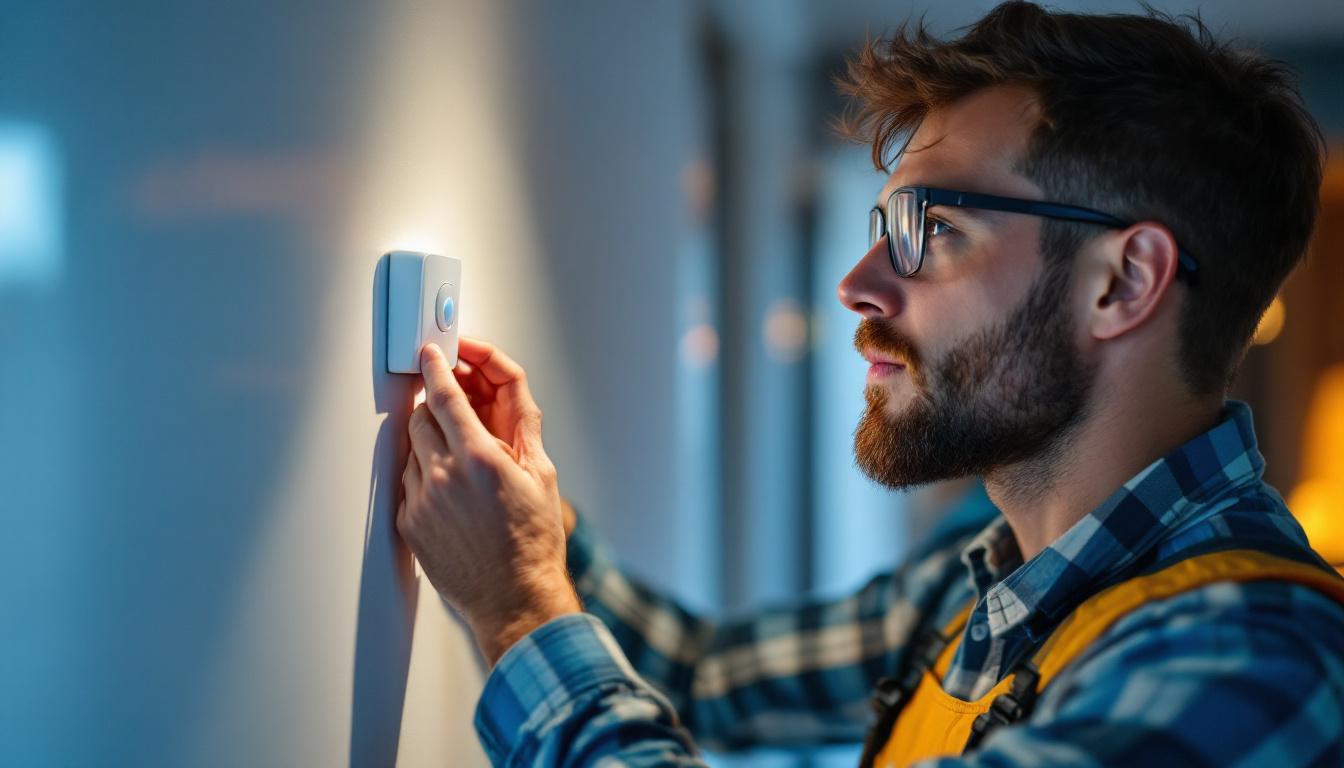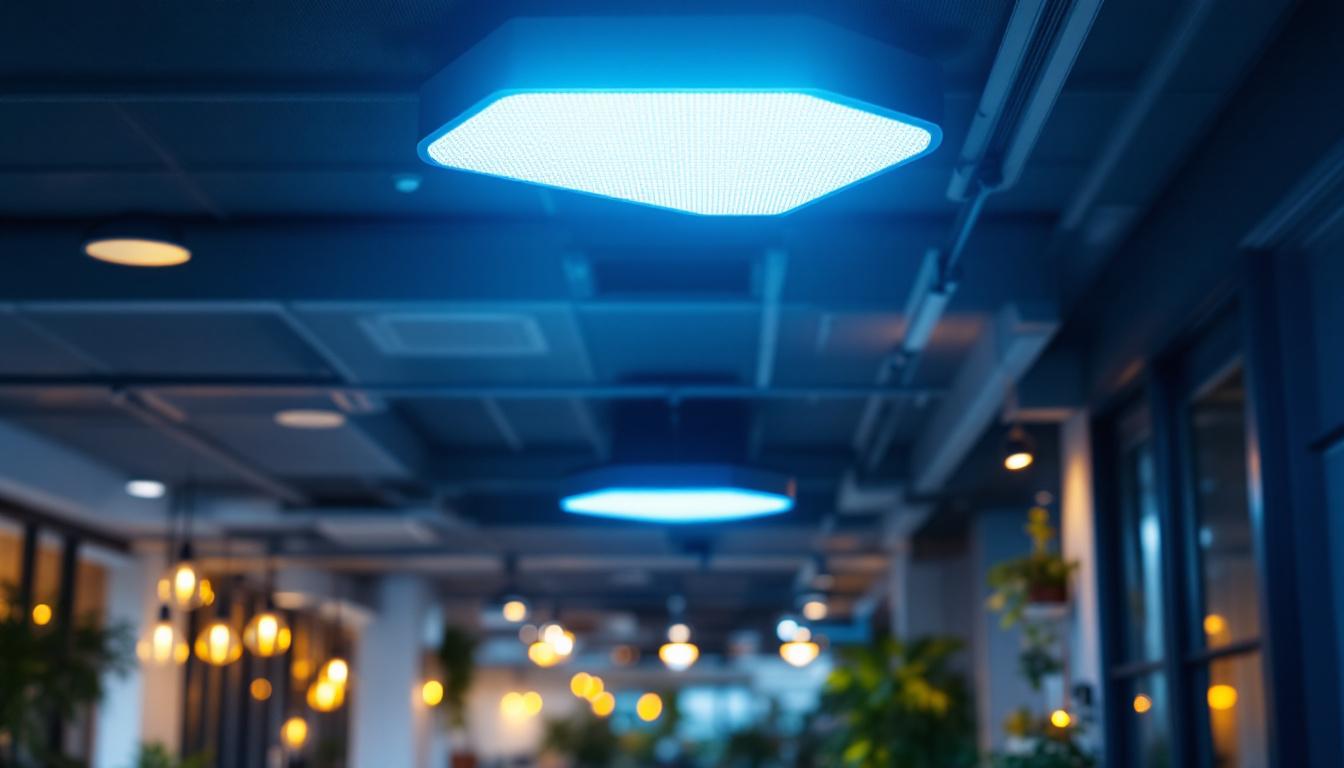
In the ever-evolving world of lighting solutions, motion sensors have emerged as a pivotal technology for indoor lighting systems. These devices not only enhance convenience but also contribute to energy efficiency and security. For lighting contractors, understanding the intricacies of motion sensors is essential to deliver optimal solutions to clients. This article delves into the key aspects of motion sensors for indoor lighting, focusing on their benefits, types, installation considerations, and best practices.
Motion sensors are devices that detect movement within a specified range and trigger a response, typically turning on lights when someone enters a room. They are integral to modern lighting systems, providing both functionality and energy savings. By leveraging technology, these sensors can enhance the user experience and reduce electricity costs. In addition to lighting, motion sensors are also employed in various applications, such as security systems, smart home devices, and even automated door systems, showcasing their versatility and importance in contemporary design.
At their core, motion sensors utilize various technologies to detect movement. The most common types include passive infrared (PIR), ultrasonic, and dual-technology sensors. PIR sensors detect body heat emitted by humans, while ultrasonic sensors use sound waves to identify motion. Dual-technology sensors combine both methods for increased reliability. This combination not only minimizes false alarms but also enhances detection accuracy, making them suitable for a wide range of environments, from bustling offices to quiet homes.
When a motion sensor detects movement, it sends a signal to the lighting system, activating the lights. This activation can be programmed to last for a specified duration or until motion is no longer detected. Understanding these mechanisms is crucial for contractors, as it allows for tailored solutions based on the specific needs of the space. Moreover, many modern motion sensors come equipped with adjustable sensitivity settings and timers, enabling users to customize their operation further, ensuring optimal performance in various conditions.
The integration of motion sensors into indoor lighting systems offers numerous advantages. Firstly, they significantly enhance energy efficiency. By ensuring that lights are only on when needed, energy consumption is reduced, leading to lower utility bills for clients. This not only benefits the environment by decreasing carbon footprints but also aligns with the growing trend of sustainable living, making properties more attractive to eco-conscious buyers.
Secondly, motion sensors improve security. In commercial settings, for instance, lights that automatically turn on when someone enters a space can deter unauthorized access. Additionally, in residential applications, they provide peace of mind by illuminating areas when residents arrive home after dark. Beyond just lighting, motion sensors can be integrated with alarm systems, sending alerts to homeowners or security services when unexpected movement is detected, thereby enhancing overall safety. Furthermore, with the rise of smart home technology, many motion sensors can now be connected to mobile apps, allowing users to monitor their homes remotely and receive real-time updates on activity, adding another layer of convenience and security to everyday life.
Lighting contractors should be familiar with the various types of motion sensors available on the market. Each type has its unique features and applications, making it essential to choose the right one for specific projects.
PIR sensors are the most commonly used type of motion sensor for indoor lighting. They are cost-effective and reliable, detecting infrared radiation emitted by humans. Typically, these sensors have a range of 20 to 40 feet and can cover a wide area, making them suitable for hallways, living rooms, and offices.
One of the key advantages of PIR sensors is their low power consumption. They only activate when they detect motion, which means they can remain in a low-power state when not in use. This feature is particularly beneficial for energy-conscious clients. Additionally, PIR sensors are often easy to install, requiring minimal wiring and setup, which can save contractors valuable time during installation. Their straightforward design also makes them a popular choice for residential applications, where homeowners appreciate the convenience of automated lighting without the complexity of more advanced systems.
Ultrasonic sensors operate differently from PIR sensors. They emit ultrasonic sound waves and measure the reflection of those waves to detect movement. This technology allows them to detect motion even in areas where PIR sensors may struggle, such as behind obstacles or in spaces with high ceilings.
While they are generally more sensitive than PIR sensors, ultrasonic sensors may be more prone to false triggers from pets or other moving objects. Therefore, careful consideration of the environment is necessary when choosing this type of sensor. Furthermore, ultrasonic sensors can be particularly advantageous in commercial settings, such as warehouses or large retail spaces, where the layout may not be conducive to traditional motion detection methods. Their ability to cover larger areas and detect subtle movements can enhance security and improve energy efficiency by ensuring lights are only activated when necessary.
For those seeking the best of both worlds, dual-technology sensors combine PIR and ultrasonic technologies. This integration enhances reliability by minimizing false triggers while ensuring accurate motion detection. They are particularly useful in environments with varying levels of activity, such as offices or retail spaces.
While dual-technology sensors may come at a higher cost, their versatility and reliability can justify the investment for many projects. Contractors should assess the specific needs of their clients to determine if this option is appropriate. Additionally, dual-technology sensors can be programmed to adjust sensitivity levels, allowing for customization based on the specific environment. This adaptability makes them an excellent choice for spaces that experience fluctuating occupancy, such as conference rooms or classrooms, where the lighting needs may change throughout the day. By implementing these sensors, contractors can help clients achieve optimal energy savings while maintaining a comfortable and well-lit environment.
Proper installation of motion sensors is crucial for their effectiveness. Lighting contractors must take several factors into account to ensure optimal performance and client satisfaction.
Choosing the right location for motion sensors is one of the most critical aspects of installation. Sensors should be placed where they can effectively cover the intended area without obstructions. For instance, placing a PIR sensor in a corner can maximize its coverage, while ultrasonic sensors may require more open spaces to function effectively.
Additionally, contractors should consider the height at which the sensors are mounted. Typically, PIR sensors are installed at a height of 6 to 8 feet, while ultrasonic sensors may need to be positioned higher to achieve optimal detection. Understanding the specific requirements of each sensor type is essential for successful installation.
Motion sensors can be either hardwired or battery-operated. Hardwired sensors are generally more reliable and require less maintenance, making them suitable for permanent installations. However, battery-operated sensors offer flexibility and can be installed in locations where wiring is impractical.
Contractors should ensure that the wiring complies with local electrical codes and standards. Additionally, it is vital to consider the power supply requirements of the chosen sensors, as some may require specific voltage levels or types of connections.
Once installed, motion sensors often require programming to function according to the client’s preferences. This step is crucial for maximizing the benefits of the technology and ensuring user satisfaction.
Most motion sensors come with adjustable sensitivity settings. Contractors should educate clients on how to customize these settings based on their specific needs. For example, in a busy office environment, a higher sensitivity setting may be necessary to ensure that lights activate promptly when employees enter a room.
Time delays are another important aspect of programming. Contractors should help clients determine the optimal duration for which lights should remain on after detecting motion. This setting can vary based on the application; for example, a bathroom may require a shorter time delay than a hallway.
As smart home technology continues to gain popularity, many motion sensors can now integrate with smart lighting systems. This capability allows for advanced features such as remote control, scheduling, and even notifications when motion is detected.
Contractors should stay informed about the latest smart technologies and how they can enhance the functionality of motion sensors. Educating clients on these options can lead to increased satisfaction and a more modern lighting solution.
To ensure successful installations and satisfied clients, lighting contractors should adhere to several best practices when working with motion sensors.
Before installation, a thorough site assessment is essential. This process involves evaluating the space, identifying potential obstacles, and understanding the client’s specific needs. By conducting a comprehensive assessment, contractors can recommend the most suitable motion sensor type and placement.
Additionally, assessing the existing lighting system and how motion sensors will integrate with it is crucial. This evaluation can help avoid compatibility issues and ensure a seamless installation process.
Once the installation is complete, educating clients about their new motion sensor system is vital. Contractors should explain how the sensors work, how to adjust settings, and the best practices for maintenance. Providing this information empowers clients to make the most of their investment and enhances their overall experience.
Moreover, offering ongoing support can foster long-term relationships with clients. Being available for questions or troubleshooting can lead to repeat business and referrals.
Motion sensors for indoor lighting represent a significant advancement in lighting technology. For lighting contractors, understanding the various types, installation considerations, and best practices is essential to deliver effective solutions to clients. By leveraging motion sensors, contractors can enhance energy efficiency, improve security, and provide greater convenience in indoor spaces.
As the demand for smart and efficient lighting solutions continues to grow, staying informed about motion sensor technology will be crucial for contractors looking to stay competitive in the industry. Embracing these advancements not only benefits clients but also positions contractors as leaders in the evolving landscape of indoor lighting.
Ready to elevate your lighting projects with the latest motion sensor technology? Look no further than LumenWholesale for all your lighting needs. We provide contractors with high-quality, spec-grade lighting products, including a wide array of motion sensors, at unbeatable wholesale prices. With our direct approach, you’ll enjoy superior products without the inflated markups often found at local distributors. Our commitment to quality and affordability, coupled with the convenience of free shipping on bulk orders, makes us your go-to source for reliable lighting solutions. Don’t compromise on performance or price. Visit LumenWholesale today and discover the best value in wholesale lighting.

Discover the essentials of 2X4 suspended ceiling lights with our comprehensive guide tailored for lighting contractors.

Discover expert tips and insights on the B-C32 light bulb tailored specifically for lighting contractors.

Discover the essentials of solar-powered arena lighting with expert insights tailored for lighting contractors.

Discover how commercial wall sconces can enhance outdoor spaces while boosting profitability in lighting installations.